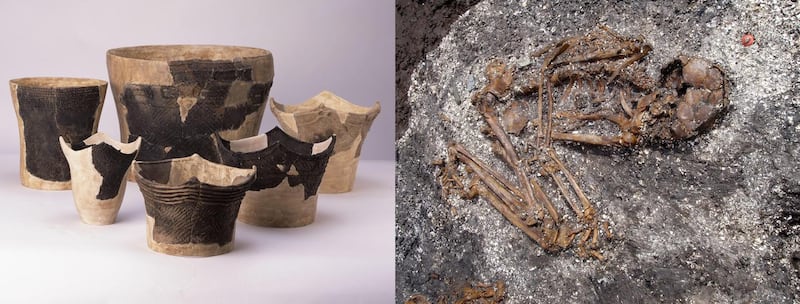Analysis of ancient DNA extracted from human bones by a team of Irish and Japanese scientists has rewritten early history, following their finding that modern day Japanese populations originated from three different genetic lineages – not two as was widely believed.
The discovery was made by a team in Trinity College led by Prof Shigeki Nakagome and Prof Dan Bradley, a leading expert in population genetics. Japanese people were known to have the "genetic signatures" of early indigenous Jomon hunter-gatherer-fishers and immigrant Yayoi farmers – but now a third genetic component linked to the Kofun peoples, whose culture spread in Japan between the third and seventh centuries, is indicated.
This has emerged from 12 newly-sequenced ancient Japanese genomes using DNA techniques in TCD. The eye-opening research was published in leading journal Science Advances on Friday.
The Japanese archipelago has been occupied by humans for at least 38,000 years but Japan underwent rapid transformations only in the past 3,000 years; first from foraging to wet-rice farming, and then to a technologically advanced imperial state, explained Prof Nakagome.

The previous hypothesis suggested mainland Japanese populations derive dual-ancestry from the indigenous Jomon hunter-gatherer-fishers, who inhabited the Japanese archipelago from around 16,000 to 3,000 years ago, and later Yayoi farmers, who migrated from the Asian continent and lived in Japan from around 900 BC to 300 AD.
But the newly sequenced ancient Japanese genomes – which came from bones of people living in pre- and post-farming periods – also identify a later influx of East Asian ancestry during the imperial Kofun period, which lasted from around 300 to 700 AD and which saw the emergence of political centralisation in Japan.
Prof Nakagome added: “Researchers have been learning more and more about the cultures of the Jomon, Yayoi, and Kofun periods as more and more ancient artefacts show up, but before our research we knew relatively little about the genetic origins and impact of the agricultural transition and later state-formation phase.”
“We now know that the ancestors derived from each of the foraging, agrarian, and state-formation phases made a significant contribution to the formation of Japanese populations today,” he noted.
Their analysis also found the Jomon maintained a small effective population size of around 1,000 over several millennia, with a deep divergence from continental populations dated to 20,000-15,000 years ago – a period which saw Japan become more geographically insular as a consequence of rising sea-levels.
The Japanese archipelago had become accessible through the Korean Peninsula at the beginning of the “Last Glacial Maximum”, some 28,000 years ago. And the widening of the Korea Strait 16,000 to 17,000 years ago due to rising sea-levels may have led to the subsequent isolation of the Jomon lineage from the rest of the continent. These timeframes coincide with the oldest evidence of Jomon pottery production.
“The Japanese archipelago is an especially interesting part of the world to investigate using a time series of ancient samples given its exceptional prehistory of long-standing continuity followed by rapid cultural transformations,” Prof Bradley said. “Our insights into the complex origins of modern-day Japanese once again shows the power of ancient genomics to uncover new information about human prehistory that could not be seen otherwise.”
"The indigenous Jomon people had their own unique lifestyle and culture within Japan for thousands of years prior to the adoption of rice farming during the subsequent Yayoi period. Our analysis clearly finds them to be a genetically distinct population with an unusually high affinity between all sampled individuals – even those differing by thousands of years in age and excavated from sites on different islands," explained TCD researcher Niall Cooke.
Prof Bradley’s group was one of the first to use molecular techniques to study diversity, adaption and biogeography in both human and domestic animal populations.










